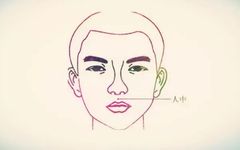
Warm Reminder
Recently, many readers have asked whether we are not updating anymore? Why can’t they see the latest published content? In fact, we are still pushing content every day, but due to changes in the public account platform’s push mechanism, articles are no longer displayed in chronological order, which has led to some readers not being able to see our public account’s pushed content in a timely manner.
If you think our content is good and want to see more Chinese and Western medicine knowledge aimed at grassroots doctors every day, please take a moment to:
1. Set the “Xinglin Academy” public account as a star⭐;
2. After reading each article, remember to click “Looking” at the bottom right corner;
3. Check out our historical articles, and we welcome your comments and interactions.
⊙Author: Li Die, Lin Xiaofeng
⊙Editor: Xinglin Jun
The Ren Zhong, also known as the water ditch, is located in the midline between the upper lip and the tip of the nose. In observation diagnosis, it primarily reflects conditions of the uterus and bladder. In healthy individuals, the water ditch appears subtly red and yellow, with a bright and moist color, a restrained appearance, a proper shape, moderate depth, symmetrical and clear edges, and is slightly narrower at the top and wider at the bottom, with a length generally equal to or slightly longer than the length of the thumb. The theoretical basis and methods for diagnosing diseases through the Ren Zhong are recorded in classical TCM texts. Although there has been a transmission of knowledge among physicians throughout history, in-depth research and exploration are lacking. In contemporary times, many medical researchers have explored the relationship between the development of the Ren Zhong and the female reproductive system through gynecological examination methods such as B-ultrasound, hysterosalpingography, and hysteroscopy, but the content is often repetitive and scattered, lacking systematic summarization. This article collects relevant information on the diagnosis of diseases through the Ren Zhong from ancient and modern sources, analyzes and organizes it to gain a deeper understanding of the practical value and significance of Ren Zhong observation, providing a basis for TCM clinical differentiation.
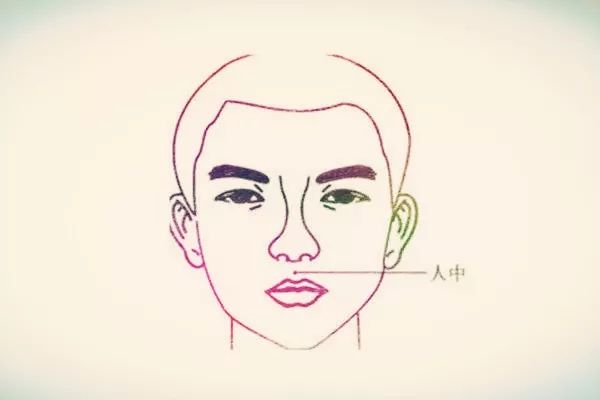
01 Theoretical Origins
The term Ren Zhong first appeared in the “Huangdi Neijing” (Yellow Emperor’s Inner Canon), which elaborates on the relationship between the Ren Zhong and the meridians, and records the content of diagnosing visceral diseases through the observation of the Ren Zhong’s morphology, laying the theoretical foundation for Ren Zhong observation. For example, in the “Lingshu·Jingmai” it states: “The hand Yangming meridian of the large intestine… exits beside the mouth and intersects at the Ren Zhong.” The “Lingshu·Shichuan” states: “Thick lips and long Ren Zhong indicate small intestine conditions,” indicating that one can infer the condition of the small intestine by observing the thickness of the lips and the length of the Ren Zhong.Additionally, the “Lingshu·Wuse” states: “In men, the color on the face indicates lower abdominal pain, and the roundness indicates pain in the penis, while the height indicates the root, and the lower indicates the head, with fox hernia being related to the yin.” In women, the face indicates bladder and uterine diseases, with scattered colors indicating pain and gathered colors indicating accumulation, with the left and right sides reflecting their respective colors and shapes. The descent to the lips indicates indulgence; if it is moist and greasy, it indicates overeating and uncleanliness.” The “Neijing Zhiyao·Color Diagnosis” explains: “Above the face should have an upper character. Above the face indicates the small intestine, while below indicates the bladder and uterus. The ovary refers to the testicles. The roundness indicates the Ren Zhong water ditch,” and “below the face should have a lower character. Below the face indicates the Ren Zhong, which governs the bladder and uterus.”This means that in men, the disease color appearing above the nose indicates lower abdominal pain, which can radiate to the testicles, and abnormalities in the Ren Zhong (referring to the Ren Zhong water ditch) suggest pain in the penis, which is a yin disease. In women, abnormal colors appearing in the Ren Zhong indicate changes in the uterus and bladder, with scattered colors often indicating pain due to qi stagnation and gathered colors indicating accumulation. If the disease color descends to the lips, it often indicates excessive indulgence and unclean discharge. From this text, it can be seen that as early as the pre-Qin period, people recognized that the Ren Zhong has a certain relationship with various parts of the body, and by observing the color of the Ren Zhong, one can infer changes in the reproductive and urinary systems, with differences between men and women.The “Zhongzangjing” from the Han Dynasty records the theory of observing the Ren Zhong to determine life and death, stating: “If the face is green and the Ren Zhong is reversed, death will occur in three days.” This indicates a sign of exhaustion of the viscera’s essence and qi, suggesting that a contracted Ren Zhong often indicates a poor prognosis. From the Jin to the Song, Jin, and Yuan dynasties, the theory of Ren Zhong observation further developed, mainly reflected in the application of color diagnosis of the Ren Zhong. Wang Shuhe from the Jin Dynasty proposed in his compilation of the “Mai Jing”: “If the patient’s nose is flat, it indicates stomach disease.”“If it is green, it indicates cold; if slightly red, it indicates the onset of a boil; if slightly black, it indicates heat; if white, it indicates untreatable conditions.” This indicates that patients with stomach diseases may show changes in the morphology of the Ren Zhong (flat) and can differentiate the nature of evil qi by observing the color of the Ren Zhong. Zhu Zhenheng from the Yuan Dynasty stated: “In cases of diarrhea, if there is sudden severe pain below the navel, and the Ren Zhong is black, it indicates death.” Black indicates the color of the kidney, and if waist pain is accompanied by a black Ren Zhong, it indicates exhaustion of kidney qi, suggesting a poor prognosis. By the Ming and Qing dynasties, the theory of Ren Zhong observation further deepened.Li Zhongzi from the Ming Dynasty in “Neijing Zhiyao·Color Diagnosis” stated: “In men, a flat and beardless Ren Zhong often indicates infertility. In women, a deep and long Ren Zhong indicates good fertility.” This shows that at that time, people had expanded the theory of the Ren Zhong to women’s fertility, proposing that both men and women should have a deep and long Ren Zhong for optimal conditions. Zhou Xuehai from the Qing Dynasty believed: “If there is rot and damp heat in the stomach and the front yin, the Ren Zhong often shows red granules or black spots.” This indicates that those with damp heat and blood stasis may show millet-like red rashes or black spots in the Ren Zhong area.
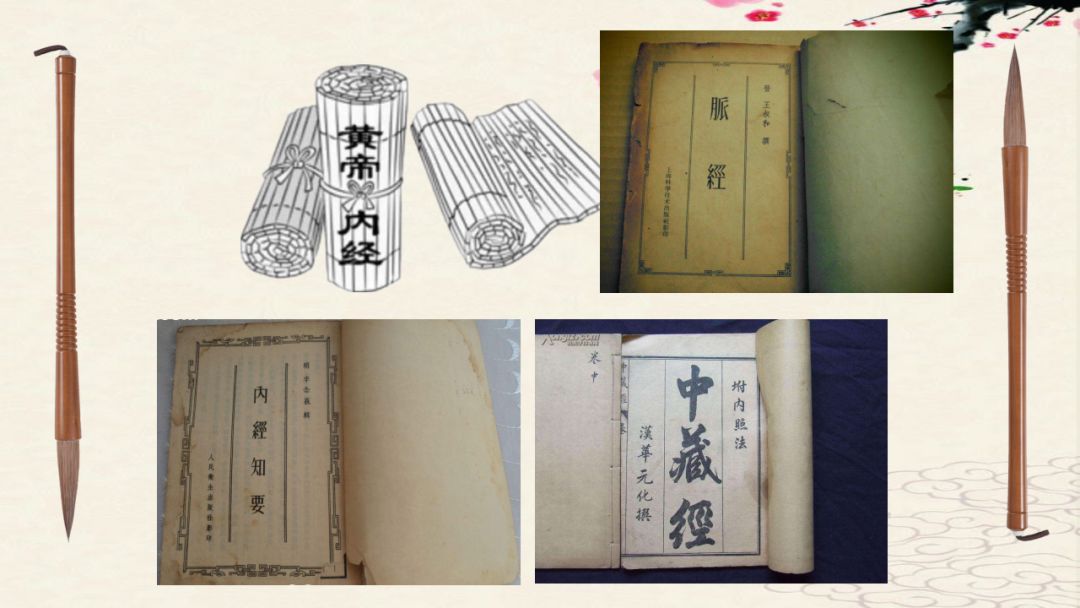
02 Basic Principles
The Ren Zhong area is a crucial point where meridians intersect and qi flows, closely related to the meridians. For example, the hand Yangming meridian of the large intestine “exits beside the mouth and intersects at the Ren Zhong,” the foot Yangming meridian of the stomach “enters the upper teeth and exits beside the mouth around the lips,” and the foot Jueyin meridian of the liver also “circles inside the lips.” Due to the interrelationship of the meridians, the Ren Zhong connects with the meridians and their corresponding viscera, thus changes in the functions of the body’s viscera and the flow of qi, blood, and body fluids can be reflected through changes in the morphology and color of the Ren Zhong.Since the Chong, Ren, and Du meridians “all originate in the womb and exit at the perineum,” as they ascend, the Du meridian “passes through the Ren Zhong,” and connects with the foot Jueyin liver meridian at the top of the head, while the Ren and Chong meridians also run close to the water ditch, thus the observation of the Ren Zhong has significant reference value for the differentiation and treatment of reproductive and urinary system diseases. The qi of the Du meridian connects with the kidneys and is known as the sea of yang meridians, thus the prosperity and decline of kidney qi and the existence of yang qi can be reflected through the Ren Zhong. The Ren meridian is the sea of yin meridians, and the spleen is the source of postnatal transformation, thus the prosperity and decline of the spleen and stomach qi can also be reflected in the Ren Zhong.
03 Observation of Ren Zhong Morphology
The content of observing the morphology of the Ren Zhong includes examining its length, width, and depth. Each person’s Ren Zhong morphology varies, primarily related to congenital endowment and influenced by environmental factors. Observing the morphology of the Ren Zhong can effectively diagnose visceral diseases, especially reflecting diseases of the reproductive system.3.1 Observing Ren Zhong Morphology to Diagnose Reproductive System Diseases① Length of the Ren Zhong: In women, a very short Ren Zhong with a flat ditch and vague edges suggests deficiency of kidney essence, often seen in immature uteruses or cervical relaxation; in men, this often indicates unilateral cryptorchidism or anorchia. If the length of the water ditch in women exceeds the length of the thumb, it often indicates uterine prolapse, and if the ditch is deep, it often indicates a retroverted uterus; if flat and shallow, it often indicates an anteverted uterus; if wide, it often indicates uterine fibroids; in men, a long Ren Zhong often indicates phimosis.② Width of the Ren Zhong: In women, a narrow Ren Zhong suggests a narrow cervix and a long uterine body; patients with acquired uterine atrophy often have a narrow and shallow Ren Zhong, with symptoms often manifesting as gradually decreasing menstrual flow leading to amenorrhea; while those with congenital immature uterus, low reproductive function, and senile uterine atrophy often have a wide and shallow Ren Zhong. Women with a retroverted uterus often have a Ren Zhong that appears in a figure-eight shape, while those with an anteverted or anteflexed uterus often have a Ren Zhong that appears in an inverted trapezoid shape, both of which may present with lower back pain and abdominal pain during menstruation.③ Concavity and Convexity of the Ren Zhong: Patients with pelvic abnormalities (such as narrow pelvis) often show concave round pits in the Ren Zhong, which can lead to difficult labor; women with double uterus or double vagina often have linear elevations in the middle of the ditch. If there are irregular growths in the Ren Zhong, it suggests menstrual irregularities, abdominal pain, or tenderness, often seen in cervical erosion, adnexitis, uterine fibroids, or cysts.④ Tilt of the Ren Zhong: This suggests a deviation of the uterine body, with the Ren Zhong tilting in the opposite direction.
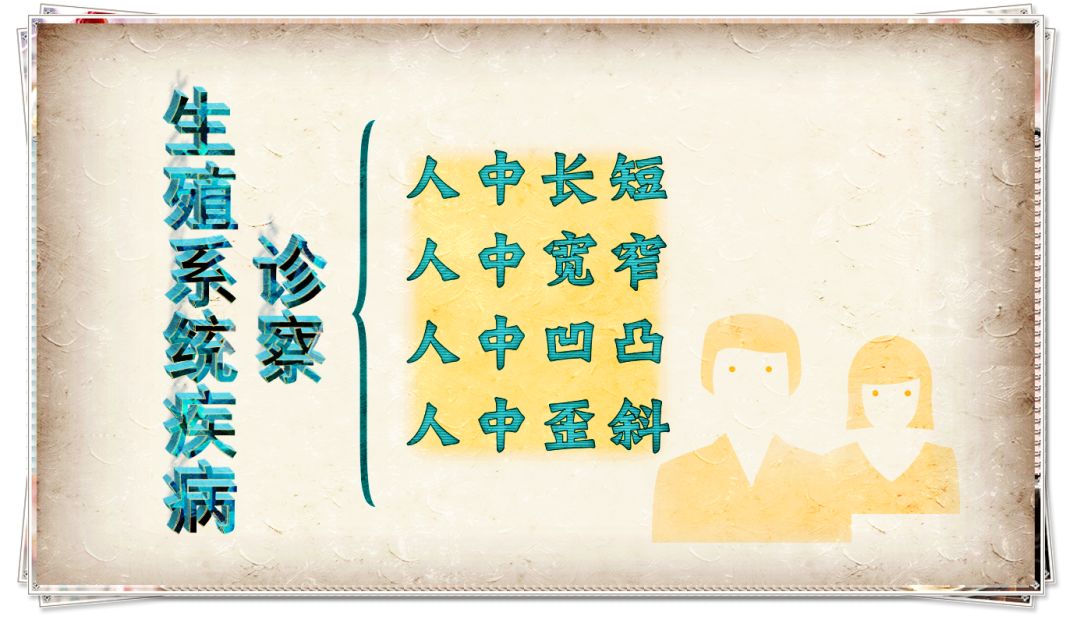
3.2 Observing Ren Zhong Morphology to Diagnose Other Diseases The large intestine meridian runs through the Ren Zhong, and the foot Yangming stomach meridian runs “beside the mouth and around the lips,” and the spleen and stomach reside in the middle jiao, connected by membranes, thus the Ren Zhong can reflect diseases of the spleen, stomach, and large intestine. The “Lingshu·Jingmai” states: “If the foot Taiyin qi is exhausted… the tongue shrinks and the Ren Zhong is full; if the Ren Zhong is full, the lips will turn inward.” This indicates that a swollen and full Ren Zhong with inverted lips suggests a sign of impending failure of spleen qi. Wang Shuhe also stated: “In patients with stomach diseases, the Ren Zhong may appear flat.” In critically ill patients, if the Ren Zhong is short and the lips become thin, it indicates exhaustion of spleen yin; if it appears extremely short, it indicates a critical sign of separation of yin and yang. Conversely, a full Ren Zhong indicates impending failure of spleen yang; if it is full and the lips are everted, it also indicates a sign of separation of yin and yang.Diseases of the urinary system often manifest in the Ren Zhong, such as kidney deficiency leading to insufficient qi transformation, resulting in urinary retention, where the Ren Zhong often appears shallow and white; if kidney deficiency is extreme, with water toxicity lingering and evil qi affecting the heart and obstructing the orifices, the water ditch often first becomes slack, followed by shortening and shallowing. The relationship between the heart and stomach is close, as the stomach’s meridian connects to the heart, and the heart and small intestine are interrelated, thus the Ren Zhong can also indicate changes in the heart and small intestine. For example, in cases of latent coronary heart disease, when clinical symptoms are not yet obvious, the Ren Zhong often appears narrow in the middle and wide at the top and bottom, with a dull and stagnant color; when angina pectoris occurs, the Ren Zhong may darken to purple and even shorten. In patients with duodenal bulb ulcers, if symptoms include gastric pain, acid reflux, and belching, the lower segment of the Ren Zhong near the lip margin often appears light purple, and may even shorten.
04 Observation of Ren Zhong Color
As early as the “Huangdi Neijing,” the important academic viewpoint of “Five Colors Indicate Disease” was recorded. For example, the “Lingshu·Wuse” states: “Dull colors indicate internal issues, bright colors indicate external issues, yellow and red indicate wind, blue and black indicate pain, white indicates cold, yellow and moist indicate pus, and deep red indicates blood, while severe pain indicates cramping.” It discusses how to judge diseases based on changes in facial color. The “Lingshu·Wuse” also proposes that the five colors correspond to the five viscera: “The five colors correspond to the viscera, with blue for the liver, red for the heart, white for the lungs, yellow for the spleen, and black for the kidneys.” Therefore, when corresponding color changes appear in the Ren Zhong, they can be referenced against the colors of the five viscera to assess the origin of the disease.
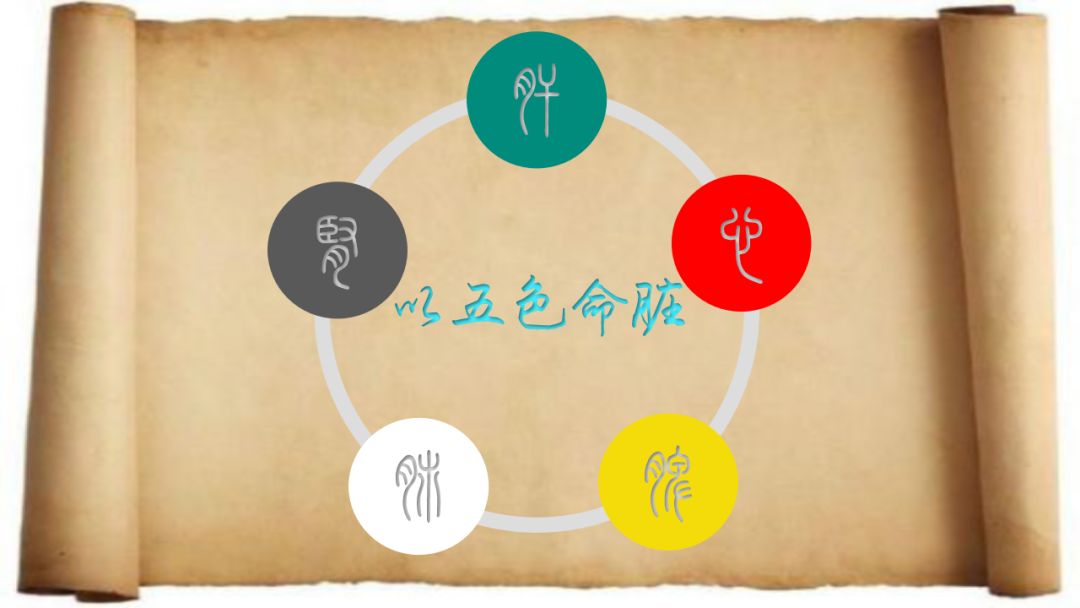
The normal color of the water ditch is similar to that of the face, and when the disease is critical, abnormal colors may appear in the water ditch. A Ren Zhong that is subtly red and yellow, bright and restrained, indicates abundant essence and qi of the spleen and kidneys; conversely, a Ren Zhong that is dry and yellow, with loose skin, indicates deficiency of the spleen and kidneys, and insufficient yin and blood. If the Ren Zhong appears earthy yellow, it often indicates yang deficiency of the spleen and stomach leading to cold; in pregnant women, a subtly yellow Ren Zhong often suggests fetal leakage or internal bleeding. A pale white Ren Zhong is often seen in patients with chronic diarrhea or dysentery; women with blood deficiency and amenorrhea often have a pale white and dry Ren Zhong; a white Ren Zhong, with cold sweat, is often seen in patients with pulmonary tuberculosis, hemoptysis, chronic cough, or pulmonary atrophy; a white color near the upper segment of the Ren Zhong close to the nose is often seen in cases of qi deficiency and metrorrhagia. A slight red color in the Ren Zhong often indicates the onset of a boil; in cases of blood heat and metrorrhagia or hematuria due to damp heat, the lower segment of the Ren Zhong near the lip margin often appears flushed; a purple-red Ren Zhong is often seen in cases of stasis heat dysmenorrhea. A blue color in the Ren Zhong is often seen in cold-type dysmenorrhea; a blue-black Ren Zhong indicates liver disease and kidney issues; a dark green Ren Zhong is often seen in severe cholestasis, jaundice, or gallbladder inflammation; a blue-black Ren Zhong in men often indicates testicular pain or dysuria; patients with nephrotic syndrome or uremia often have a black Ren Zhong.
05 Embryological Correlation of the Ren Zhong and the Reproductive System
From the perspective of human tissue development, the uterus evolves from the paramesonephric ducts, and abnormal uterine morphology is due to abnormal development or cessation of development of the paramesonephric ducts. For example, a double uterus occurs when the left and right paramesonephric ducts do not completely merge during the formation of the uterus; if this duplication occurs only in the upper part of the uterus, it becomes a bicornuate uterus; if one side of the paramesonephric duct regresses or fails to form, it can become a unicornuate uterus with only one fallopian tube. The formation period of the Ren Zhong coincides with the formation of the paramesonephric ducts, specifically during the 6th to 7th week of embryonic growth. If during this period, some factors affect the development of the paramesonephric ducts, it will also simultaneously affect the development of the Ren Zhong tissue, leading to synchronous variations in uterine morphology and Ren Zhong morphology.The diagnostic principle of TCM Ren Zhong observation, which “infers the internal from the external,” is also explained in Professor Zhang Yingqing’s “Biological Holographic Law.” His viewpoint is that all information of a biological whole is contained within each part of the organism that has life functions and is relatively independent. Scholars abroad have also explained the principles of facial observation and treatment from the perspective of medical control theory. Dr. Dale’s “Facial Microneedle Holography” clearly maps out the positional relationship between the Ren Zhong and the bladder and sexual organs, suggesting that changes in these positions in terms of color, lines, and swelling indicate corresponding pathological changes.
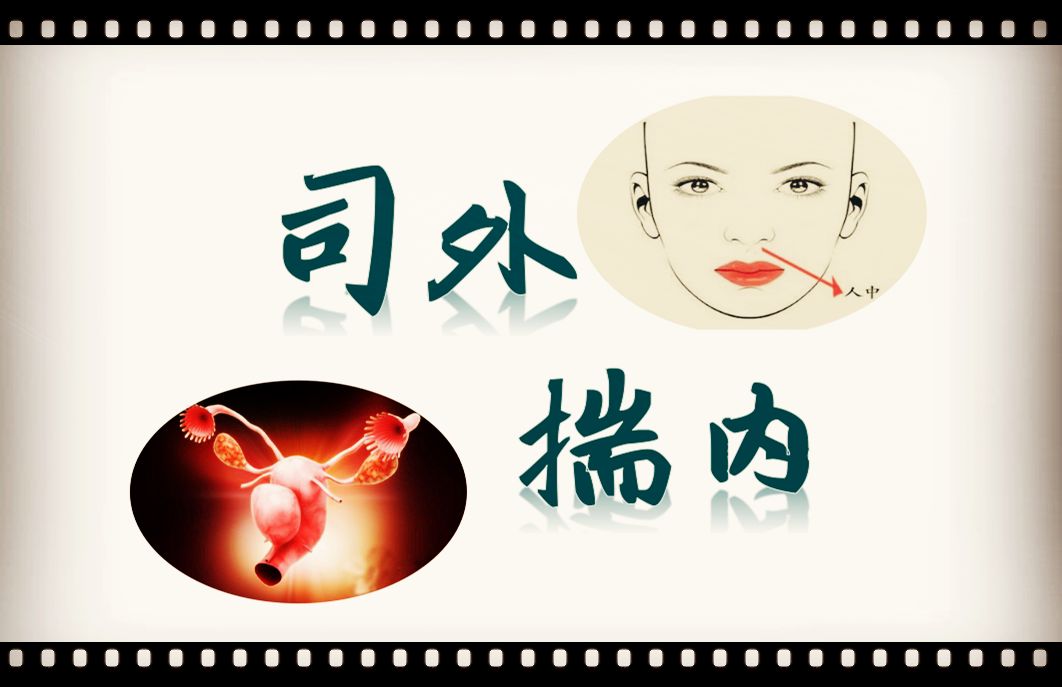
06 Clinical Application Examples of Ren Zhong Observation
Master of Traditional Chinese Medicine, Mr. Zhu Liangchun, is skilled in Ren Zhong observation. Mr. Zhu believes that in clinical practice, any Ren Zhong that differs in length from the thumb indicates uterine or bladder disease, and the greater the difference in length, the more obvious the disease. In men, this may indicate issues related to sexual function and fertility, while in women, it may indicate abnormalities in menstruation, pregnancy, or uterine prolapse. Mr. Zhu once diagnosed a patient with nocturnal emissions and impotence, whose Ren Zhong was black and shorter than the length of the thumb by 0.7 cm (pre-treatment semen analysis showed normal quantity but 70% dead sperm). The black color of the Ren Zhong indicated kidney disease, and upon tracing the medical history, it was found that the patient had overexerted himself, leading to kidney essence depletion and decline of the Mingmen fire, resulting in impotence.Combining other clinical symptoms, the diagnosis was impotence due to decline of Mingmen fire, and after treatment with kidney tonifying and essence replenishing methods, the black color of the Ren Zhong gradually diminished, and a re-examination of the semen showed an 80% motility rate with good activity. Another case involved a woman with dysmenorrhea whose Ren Zhong was red and blue, and whose ditch length was shorter than the thumb by 0.6 cm. Mr. Zhu believed that the red color indicated heat, while the blue color indicated liver disease and pain. Upon inquiry, it was found that the patient had long-term depression and anger, leading to qi stagnation and excess liver fire, resulting in blood stasis and dysmenorrhea. Thus, the diagnosis was dysmenorrhea due to qi stagnation and blood stasis, and after treatment with methods to invigorate qi and blood, and clear heat and drain fire, the dysmenorrhea was alleviated, and the red and blue color of the Ren Zhong also disappeared. He also treated a patient with acute orchitis, whose Ren Zhong was blue and shorter than the thumb by 0.9 cm, diagnosing it as damp heat descending in the liver meridian, and treated it with a modified Longdan Xiegan Decoction, after which the blue color of the Ren Zhong gradually diminished, and the inflammation healed.Zhao Ying introduced Professor Zhang Yuzhen’s experience in treating gynecological diseases. Professor Zhang believes that darkening around the lips often indicates kidney deficiency, deficiency of the Chong and Ren meridians, or kidney deficiency with blood stasis, often leading to menstrual disorders or infertility. The depth and length of the Ren Zhong can also reflect the development of the uterus and the strength of reproductive function. For such patients, Professor Zhang often uses kidney tonifying and blood invigorating methods, commonly using Shoutai Wan combined with Shixiao San, achieving good results.The theory of Ren Zhong observation has a long history and provides guidance for clinical differentiation and treatment in TCM. In the future, more experimental and clinical research on Ren Zhong observation should be conducted to highlight and promote the uniqueness and superiority of TCM observation methods.

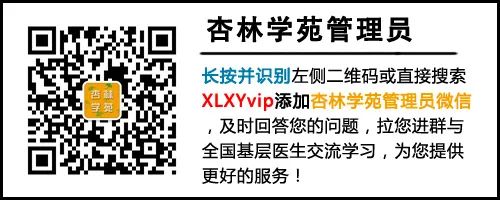
This article is sourced from: “Shandong Journal of Traditional Chinese Medicine” 2018, Issue 8. Respect knowledge and labor, please retain copyright information and indicate the source as Xinglin Academy (xinglinxy). The copyright of the content published in this WeChat belongs to the relevant rights holders. If there are any improper uses, please feel free to contact us for negotiation.

▼▼▼ClickRead the original text to viewhistorical articles

